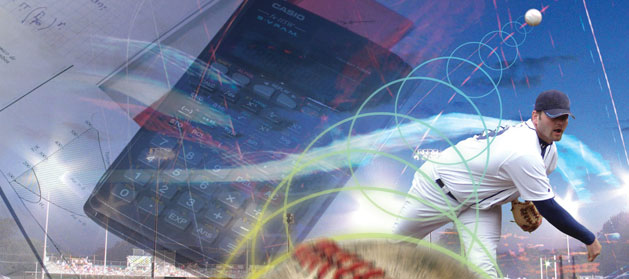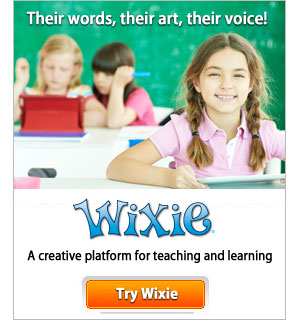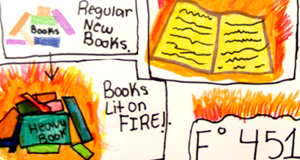Fastballs, Free Throws and Physics
Students create a slide show, video, or animation to show how physics concepts apply to their favorite sport.

Task
Physics helps explain the world around us, but many students can't see this connection and lose interest in science. After a Physical Science unit on Force and Motion, ask students to create a slide show, video, or animation that shows other students how physics explains what happens during different sports activities.
Engage
To begin, complete your regular Physical Science unit on Force and Motion. Let students know they will show what they learned through a performance assessment as they create a slide show, video, or animation that explains how physics affects their favorite sport.
Review Newton’s Laws of Motion as well as essential terminology for explaining them such as friction (including sliding, rolling, fluid, and static), gravity, acceleration, inertia, momentum, velocity, force, projectile motion, and frame of reference.
To help ensure high-quality projects, explore examples of past student work that meet project objectives. Establish criteria for student work, such as including at least two of Newton’s three Laws of Motion and using four vocabulary terms.
Choose a sport most students are familiar with and work as a class to discuss how a force or motion topic could be illustrated for this sport. For example, ask the class a question like “Where can you find projectile motion in football?” to start the discussion.
After the class discussion, have students choose their favorite sport and demonstrate how it is governed by Newton’s Laws of force and motion. Students should begin brainstorming ideas and identifying key language they will use to describe their ideas.
Once students have had time to brainstorm, have them share some of their ideas so you can identify and correct any misinformation prior to their own project work. It also provides all students with ideas they can use in their own projects.
Create
If you, or your students, are new to project work, ask them to plan out their work using a storyboard. Each box in a storyboard represents a page or scene in their final project. A storyboard provides a great formative assessment you can use to evaluate student understanding before they begin work.
Students can use a storyboard to clearly define and describe the physics terms they are illustrating, thoroughly sketch out what they will show for each term, and even write out the text or narration they will include for each segment. The more detailed the storyboard, the easier it will be for students to create their project.
Students can use a tool like Wixie to easily create a slide show using digital images of themselves playing their sports, or a tool like Frames to create illustrations and animated models of how physics interrelates with the sport they have chosen. No matter what tool they use, students should combine images, and add text labels and voice narration to explain the terms and laws of motion.
Share
Have each student present his or her project to the class. While viewing, ask students to take notes so they can provide warm (what they liked about the work) and cool (what the author could do to improve it) feedback.
Post the files to a classroom website, so all students can use them for review or extended studies.
Assessment
Use the student’s storyboard as a formative assessment to see how well each student understands the physics concepts being illustrated. Then work with the student to correct any misconceptions or elaborate the information.
The final project will help you assess student understanding of the physics concepts, as well as their ability to communicate information through visual, written, and oral presentation.
Resources
Goodstein, Madeline. Sports Science Projects: The Physics of Balls in Motion (Science Fair Success)
Vizard, Frank (Editor). Why a Curveball Curves: The Incredible Science of Sports (Popular Mechanics)
Standards
Next Generation Science Standards
MS-PS2-1 Motion and Stability: Forces and Interactions
Apply Newton’s Third Law to design a solution to a problem involving the motion of two colliding objects.
MS-PS2-2 Motion and Stability: Forces and Interactions
Plan an investigation to provide evidence that the change in an object’s motion depends on the sum of the forces on the object and the mass of the object.
ISTE NETS for Students 2016:
3. Knowledge Constructor
Students critically curate a variety of resources using digital tools to construct knowledge, produce creative artifacts and make meaningful learning experiences for themselves and others. Students:
a. plan and employ effective research strategies to locate information and other resources for their intellectual or creative pursuits.
b. evaluate the accuracy, perspective, credibility and relevance of information, media, data or other resources.
c. curate information from digital resources using a variety of tools and methods to create collections of artifacts that demonstrate meaningful connections or conclusions.
6. Creative Communicator
Students communicate clearly and express themselves creatively for a variety of purposes using the platforms, tools, styles, formats and digital media appropriate to their goals. Students:
a. choose the appropriate platforms and tools for meeting the desired objectives of their creation or communication.
b. create original works or responsibly repurpose or remix digital resources into new creations.
c. communicate complex ideas clearly and effectively by creating or using a variety of digital objects such as visualizations, models or simulations.
d. publish or present content that customizes the message and medium for their intended audiences.









